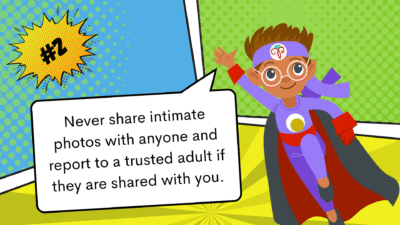Helping Children Understand Why Their Images Should Never Be Shared Online At RosasChildren.com, we protect children not only with our arms—but with
 Helping Children Understand Why Their Images Should Never Be Shared Online
Helping Children Understand Why Their Images Should Never Be Shared Online
At RosasChildren.com, we protect children not only with our arms—but with information, wisdom, and truth.
And here’s a truth we must speak clearly and often:
No child should be sharing pictures or videos of themselves online. Period.
Yes—even “innocent” ones.
Yes—even if it’s just for fun.
Yes—even if someone says, “It’s just between us.”
Because what begins as a simple photo can easily be twisted, copied, stolen—or used to hurt them.
🛑 The Dangerous Tactics Predators Use to Trick Children Into Sharing Images
“Let’s Trade” Trick
❌ “I’ll show you mine if you show me yours.”
Children are often led into a false sense of fairness. But what’s really happening is digital grooming. The adult may be using fake images and never revealing their true identity.Flattery & Friendship
❌ “You’re so cute! You should be a model.”
❌ “You’re the only one I trust with this.”
Predators love-bomb children with compliments to build trust and break down defenses.Fake Profiles
❌ “I’m your age too!”
Predators often pose as other kids, using images stolen from real children to make their profiles seem legit. These profiles are built specifically to target and trick.Guilt or Pressure
❌ “If you really cared about me, you would.”
❌ “You’re being mean. Don’t you trust me?”
These are classic emotional manipulation tactics used to wear children down and confuse their boundaries.Games & Roleplay
❌ “Let’s play truth or dare.”
❌ “Let’s pretend we’re married.”
What seems silly or innocent to a child can quickly become dangerous, especially in chat rooms or gaming platforms.Threats & Blackmail (Sextortion)
❌ “If you don’t send more, I’ll share the first one with everyone.”
Some predators collect just one image and use it to trap children into sending more. This is terrifying and traumatizing for children who don’t know how to get out.
🧠 Teach Your Child This Rule
“No one online needs a picture of you. Not one. Not ever.”
Even friends should ask in person. Even then—trust your gut.
💬Practice and Conversation Starters for Safe Adults
“Has anyone online ever asked you to send a picture—even just for fun?”
“What would you do if someone asked for a photo and said, ‘Don’t tell anyone’?”
“If anything ever feels uncomfortable, you can always come to me—no matter what.”
Reinforce that no shame will ever come from telling a safe adult. Ever.
🛡️ A Reminder for Parents and Caregivers:
It is not paranoia to teach children to protect their privacy.
It is power.
It is love in action.
It is prevention before rescue.
Let’s raise children who know that their bodies, their images, and their boundaries are theirs alone—not to be shared, traded, or taken.
Because children deserve truth, safety, and guardians who stay one step ahead.